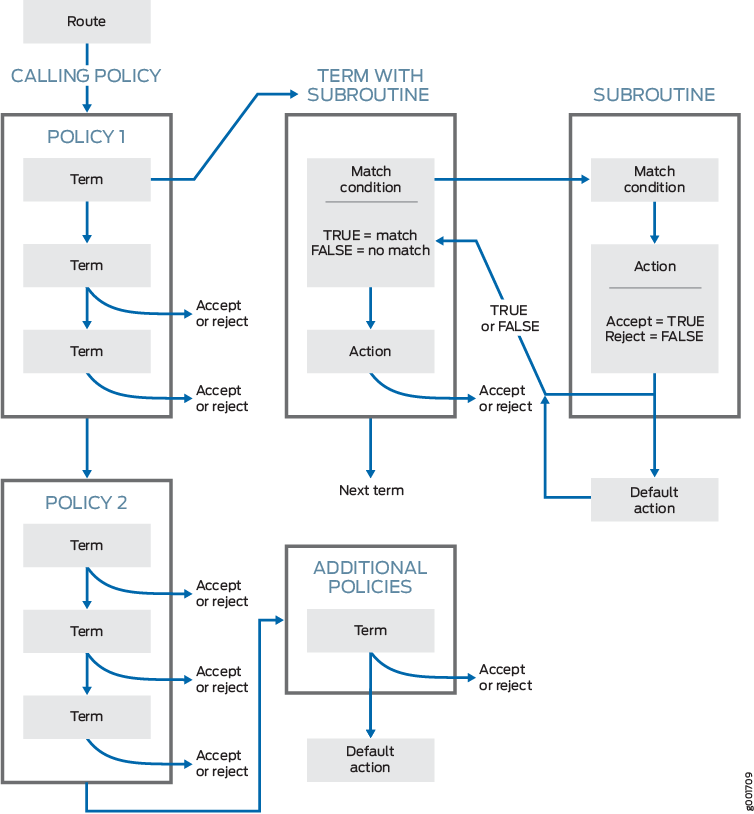How a Routing Policy Subroutine Is Evaluated
Figure 1 shows how a subroutine is evaluated. The subroutine is included in the first term of the first routing policy in a chain. Each route is evaluated against the subroutine as follows:
-
The route is evaluated against the first term in the first routing policy. If the route does not match all match conditions specified before the subroutine, the subroutine is skipped and the next term in the routing policy is evaluated (see Step 2). If the route matches all match conditions specified before the subroutine, the route is evaluated against the subroutine. If the route matches the match conditions in any of the subroutine terms, two levels of evaluation occur in the following order:
-
The actions in the subroutine term are evaluated. If one of the actions is accept, evaluation of the subroutine ends and a Boolean value of TRUE is returned to the calling policy. If one of the actions is reject, evaluation of the subroutine ends and FALSE is returned to the calling policy.
If the subroutine does not specify the
accept,rejectornext-policyaction, it uses theacceptorrejectaction specified by the default policy, and the values of TRUE or FALSE are returned to the calling policy as described in the previous paragraph. -
The calling policy’s subroutine match condition is evaluated. During this part of the evaluation, TRUE equals a match and FALSE equals no match. If the subroutine returns TRUE to the calling policy, then the evaluation of the calling policy continues. If the subroutine returns FALSE to the calling policy, then the evaluation of the current term ends and the next term is evaluated.
-
-
The route is evaluated against the second term in the first routing policy.
If you specify a policy chain as a subroutine, the entire chain acts as a single subroutine. As with other chains, the action specified by the default policy is taken only when the entire chain does not accept or reject a route.
If a term defines multiple match conditions, including a subroutine, and a route does not match a condition specified before the subroutine, the evaluation of the term ends and the subroutine is not called and evaluated. In this situation, an action specified in the subroutine that manipulates a route’s characteristics is not implemented.

